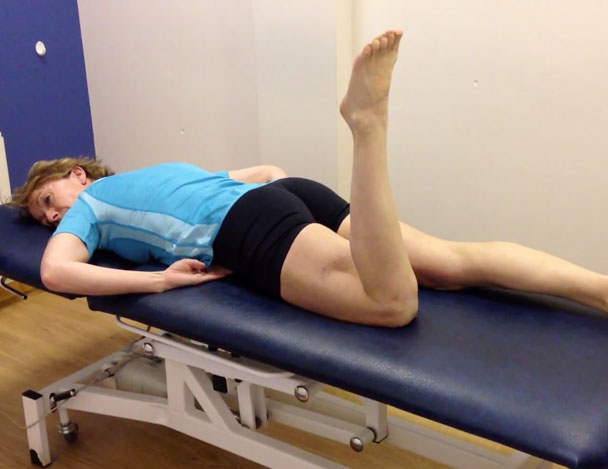It is very common to see an increase in calf injuries during the marathon and half marathon season. With the increase in miles in your training and including some faster sessions this can increase the risk of the dreaded calf injury.
Other common reasons for a calf pain and tightness developing include; change of shoes (especially to lower heel drop), increased hill work, change of technique (towards mid/forefoot striking), weakness and poor flexibility – all of these act to increase the ‘load’ on the calf muscles.
Your ‘calf’ is made up of two muscles – the gastrocnemius and the soleus. They blend to form the Achilles tendon which attaches to your heel bone. Tightness and injuries of the calf muscles can also lead to Achilles problems, plantar fasciitis and other foot problems. It’s so important to look after the calf’s and if having problems to seek help early to avoid missing training and your targeted race.
When we run there is a huge force that goes through the calf and the calf has to work really hard during running. So what can I do about it? Plenty!
First of all, if in doubt, get it checked out. If it has been annoying you for a while come in and get it checked by our Chartered Physiotherapists who specialise in running injuries and can manage all aspects of your return to running.
Most runners appreciate that strength training is a good addition to their running. However, the calf is often neglected. A tight and weak calf complex is susceptible to injury. Strong and flexible calves are more robust, less likely to fatigue and therefore become injured.
To reduce your chances of a calf injury, add the following into your weekly running routine:
3. Don’t forget to include strength and flexibility work for your hamstrings and glutes. Together with the calf, these form the ‘posterior chain’, so keeping them strong and supple will help support the calf.
4. If you have a strain, follow the POLICE protocol – Protect, Optimal Loading, Ice, Compression, and Elevation.
In the early stages it is wise not to run, but you can still train e.g. cross trainer, bike, and swim.
Once you are able to walk and do the stairs without pain for a few days, then you might consider a return to running…but sensibly e.g. walk/run. Let pain guide your progression.
5. Even if you don’t have calf pain but especially if you have in the past, it is advised to add foam rolling, strength and massage sessions into your routine. A regular massage can help to prevent knots and tightness developing in the calves and help keep the muscles nice and loose.
Let us help you with all aspects of running fitness and book in to see one of our team.

It is very common to see an increase in calf injuries during the marathon and half marathon season. With the increase in miles in your training and including some faster sessions this can increase the risk of the dreaded calf injury.
Other common reasons for a calf pain and tightness developing include; change of shoes (especially to lower heel drop), increased hill work, change of technique (towards mid/forefoot striking), weakness and poor flexibility – all of these act to increase the ‘load’ on the calf muscles.
Your ‘calf’ is made up of two muscles – the gastrocnemius and the soleus. They blend to form the Achilles tendon which attaches to your heel bone. Tightness and injuries of the calf muscles can also lead to Achilles problems, plantar fasciitis and other foot problems. It’s so important to look after the calf’s and if having problems to seek help early to avoid missing training and your targeted race.
When we run there is a huge force that goes through the calf and the calf has to work really hard during running. So what can I do about it? Plenty!
First of all, if in doubt, get it checked out. If it has been annoying you for a while come in and get it checked by our Chartered Physiotherapists who specialise in running injuries and can manage all aspects of your return to running.
Most runners appreciate that strength training is a good addition to their running. However, the calf is often neglected. A tight and weak calf complex is susceptible to injury. Strong and flexible calves are more robust, less likely to fatigue and therefore become injured.
To reduce your chances of a calf injury, add the following into your weekly running routine:
3. Don’t forget to include strength and flexibility work for your hamstrings and glutes. Together with the calf, these form the ‘posterior chain’, so keeping them strong and supple will help support the calf.
4. If you have a strain, follow the POLICE protocol – Protect, Optimal Loading, Ice, Compression, and Elevation.
In the early stages it is wise not to run, but you can still train e.g. cross trainer, bike, and swim.
Once you are able to walk and do the stairs without pain for a few days, then you might consider a return to running…but sensibly e.g. walk/run. Let pain guide your progression.
5. Even if you don’t have calf pain but especially if you have in the past, it is advised to add foam rolling, strength and massage sessions into your routine. A regular massage can help to prevent knots and tightness developing in the calves and help keep the muscles nice and loose.
Let us help you with all aspects of running fitness and book in to see one of our team.
